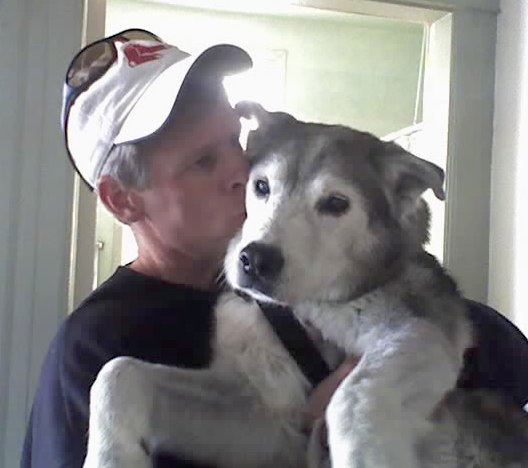 Oklahoma cycling blogger CycleDog writes this week:
Oklahoma cycling blogger CycleDog writes this week:
There were a couple of (bicycling articles) with the usual ‘you can’t ride ABC Street because it’s too dangerous/too fast/too narrow/too whatever’. Many cyclists think this way and too many of our alleged advocacy groups encourage them to do so. They hype the danger of riding in traffic because their agenda calls for bike lanes on every street and roadway in the nation. Never mind if this is good for the community, good for cyclists, or good for the taxpayers. It’s VERY good for the organizations involved. Thunderhead Alliance, Bikes Belong, and sadly, even the League of American Bicyclists endorse such projects.
These bike lane proponents claim to have the needs of cyclists in mind when in fact their projects are mainly beneficial to motorists. (Read more)
CycleDog is one of a shrinking number of
old-paradigm bicyclists who spout such "straw man" nonsense. ("
Bike lanes on every street"? Which groups call for that?) Sigh. This "paint-n-path" versus "effective cycling" argument is soooo very tiresome.
The sad reality is that bicyclists in much of auto-centric America face hostile street conditions. How should bicyclists respond to a hostile streetscape? Alternative #1:
Change the streetscape to a create "
complete streets" more amenable to cycling, walking, transit. Alternative #2:
Cope with bad streets; teach bicyclists how to adapt to hostile streets, through
bike safety education programs. Change or cope.
CycleDog condemns organizations ("they only want your dues") which favor Alternative #1. However, changing streets to better support bicycling is imperative, which is why the
most effective bike advocacy organizations pursue Alternative #1. This means serious political organizing, agitating, advocating, coalition building, campaigning. And this is what has worked in
San Francisco, which is the
only city in the US to have seen a doubling of bicycling for transportation according to
U.S. Census Bureau.
Alternative #1 (change streets) is positive, empowering, and effective. It works to increase bicycling presence, power, and participation, and nothing improves safety for cyclists more than the abundant presence of bicyclists. It is proactive, working to shape future street development and reshape existing public space. It is expansive, reaching out to improve communities through bicycling.
Alternative #2 (education to better cope with road hazards, apparently favored by CycleDog) is demoralizing, defeatist, and ineffective. It leads to even further marginalization of bicyclists on public streets, as unopposed auto interests create streetscapes even more hostile to bicyclists. It is reactive, working to adapt present "square" cyclists to "round" streets.
As a
League Cycling Instructor (#1237) I support bicycle education. But it is no substitute for advocacy. Nor is it universally effective; note the "success" of motorist education--42,000 deaths a year and counting. And education is more than simply bike-handling and street safety clinics: media outreach, street signage, bike lanes, "
sharrows", public service advertising campaigns--all serve to educate motorists, bicyclists, and public officials.
In reality all cyclists do both, change and cope. They cope with existing conditions as they endeavor to change them. But clearly the path to a more bicyclist-friendly U.S. is to pursue change.
Image: Tony Eason.
See: Bicyclists winning a war of lanes in San Francisco, Christian Science Monitor, 09.12.06
See: Cycling supporters on a roll in S.F., San Francisco Chronicle, 08.21.06
See: League of American Bicyclists
See: Thunderhead Alliance
Visit: Paul Dorn's Bike Commuting Tips Site















